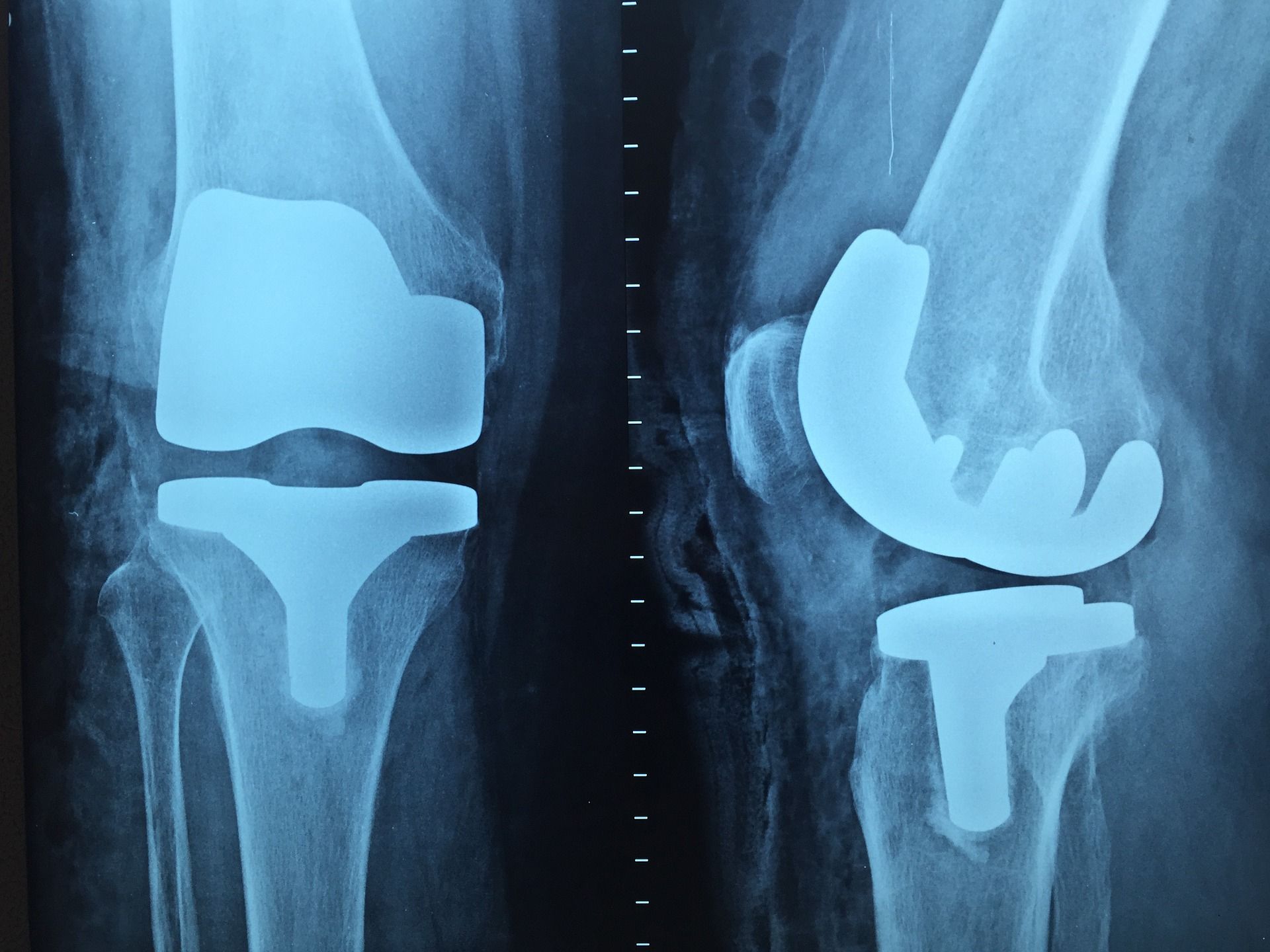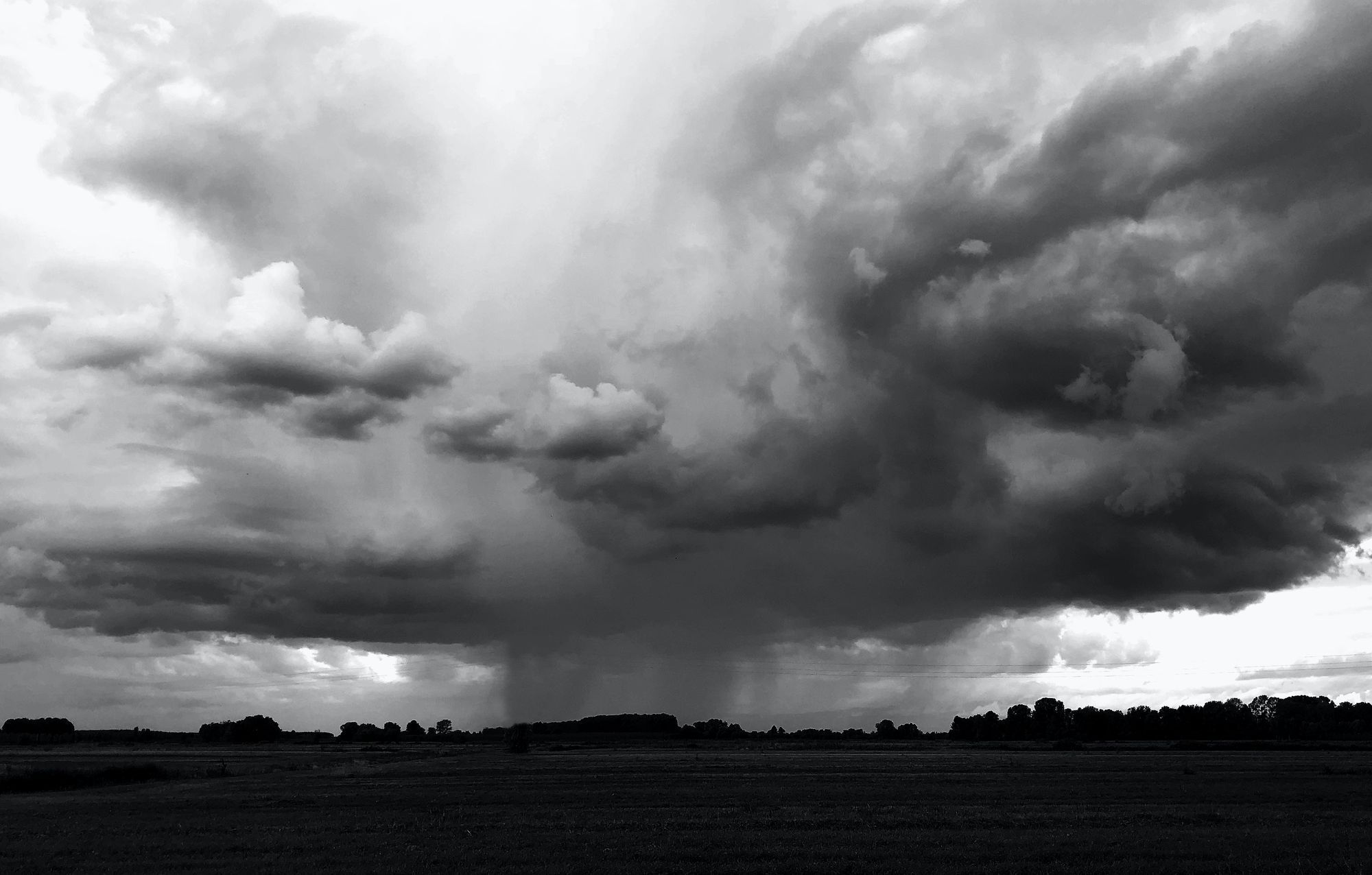Why does my knee hurt when it rains? Photo by Francesco Borzani from Pexels.
Growing up on a farm, my grandma was invaluable during hay season because she could predict if it was going to rain! She always told us, “if my knee hurts, it’s going to rain. If my knee feels good, you're safe to cut the hay.” Grandma had pain from osteoarthritis, which she attributed to getting worse with bad weather. I was always curious as to why the weather would cause more pain in people with osteoarthritis.
It is not just me, everybody knows someone who says their pain from osteoarthritis is affected by the weather. There are many personal claims that people feel more pain with drastic changes in weather. A study looking at people with knee, hip, and hand osteoarthritis found that 67% of people with those conditions perceived that the weather caused them more pain.[1]
Does rain really cause knee pain?
With so many people with osteoarthritis who feel pain when it rains, the lack of consistent scientific evidence behind this phenomena is puzzling. There are typically three factors to the weather that are believed to influence knee pain: temperature, humidity, and rain (due to changes in atmospheric pressure). A review of all of the studies looking for a relationship between these variables and arthritic pain found inconsistent results.[2] Some studies found there was no relationship, others found a relationship between each of the aspects of the weather. When a relationship was found, it was usually with cold temperatures, high humidity, and low atmospheric pressure. But, sometimes it was the opposite of all of those!
One thing that is consistent throughout; there is a group of people who have osteoarthritis and are weather sensitive, meaning they have more pain with changes in weather.[2] Rain and other changes in the weather appear to be linked to knee pain in some people, but not in others. It depends on the individual.
What kind of changes in weather are associated with knee pain, and why?
Even though this varies from person to person, there are changes in weather that are more commonly associated with knee pain in people with osteoarthritis.
Rain and atmospheric pressure:
The specific aspect about rain that is theorized to cause pain is not the actual water, but the change in atmospheric pressure that causes it to rain. In people with knee osteoarthritis, the destruction of cartilage and tissues around the knee expose the nerve endings of pressure sensing nerves. This is thought to increase the sensitivity of these nerves, leading to pain with the drastic changes in pressure that come before it rains.[3] It is also thought that the change in pressure will cause the damaged tissue in the knee to expand and contract, leading to pain.[4]
Cold temperatures:
Colder temperature is another factor that might increase knee pain.[3] In the knee, there is fluid in and around the joint that allows it to move smoothly and without pain. It is thought that the cold causes the fluid to thicken, creating a stiffer joint and more friction between the surfaces, resulting in more pain. The cold weather might also affect how easily the muscles and tendons around the joint can contract and expand, further attributing to increases in pain.[3]
Humidity:
My grandpa moved to Arizona every winter because he said the dry heat relieved the pain from his arthritis. He may have a valid point! For some people, humid weather is more connected to the pain they feel in their knee. It is thought that the humidity in the air causes the damaged and inflamed tissues in the knee joint to expand, which would further decrease the space in the joint and cause pain.[3] In dry weather, these tissues can relax, creating more space within the knee joint. This would allow the knee to move more freely with less pain. It is important to remember that this is not a proven theory and moving to a dryer climate will not necessarily decrease your pain.
Bad weather causes changes in mood:
An additional factor of bad weather that should not be overlooked is how it makes people feel. Bad weather has been shown to negatively affect people’s mood, which is directly related to how much pain they feel.[3] On rainy days, people also tend to be less active and stay inside. Staying active is one of the best ways to manage pain with osteoarthritis, so the longer the weather stays bad and you avoid activity, the more pain you could feel.[5] This would further add to the possible factors above as to why rain would cause knee pain.
Will I still have pain when it rains after my knee replacement?

The purpose of a knee replacement is to decrease pain and make everyday activities easier for those who have osteoarthritis. Knee replacements with proper physical therapy has been shown to be successful in decreasing pain and improving quality of life,[6] but some people still can feel pain or stiffness in their knee when it rains. One explanation could be that a knee replacement only helps with the symptoms of osteoarthritis, it does not actually cure the disease itself. Additionally, your knee is literally heavier and might feel weird after a knee replacement, which could still make it sensitive to changes in the weather. Even with these factors in consideration, the hope is that the decrease in pain after a knee replacement with physical therapy will carry over to feeling less pain in the knee when it rains.[6]
Conclusion
There are several factors to the weather that might cause someone with knee osteoarthritis to feel more pain. These include: the change in atmospheric pressure before and during rain, cold temperatures, increased humidity, and the effect bad weather can have on your mood. While there are many theories for why these aspects of the weather increase pain, nothing is proven and it is all highly debated in the scientific community. There are also many people who have osteoarthritis, but their pain is not affected by the weather at all. This could be due to them not being sensitive to changes in weather, or because they have found a way to successfully manage their pain (exercise has been shown to be the most effective in this regard). The majority of people with osteoarthritis do feel pain when it rains and there are many theories as to why. Even though some people do not feel pain and none of the theories are proven, I can assure you that you are not imagining the pain in your knee that comes with rain!
Curovate can help you manage the pain you feel in your knee from osteoarthritis. The physical therapy exercise app focuses on knee replacements, hip replacements, and ACL surgery, but you can also use the knee replacement protocol to help manage your knee osteoarthritis. The app contains daily exercise plans that include physical therapy videos and the ability to track your progress. You can download the app from the App store or Google Play store below.
If you need further customized assistance during your surgery or injury recovery check out our Virtual Physical Therapy page to book your 1-on-1 video session with a physical therapist.
 |
 |
|---|
Other blogs related to knee pain and osteoarthritis:
- Is it normal to still have pain after a knee replacement surgery?
- Why does my knee feel weird after my total knee replacement? Why does my knee feel heavy after my total knee replacement?
- My surgeon said I have knee osteoarthritis but I don't have pain - should I get a knee replacement?
References







